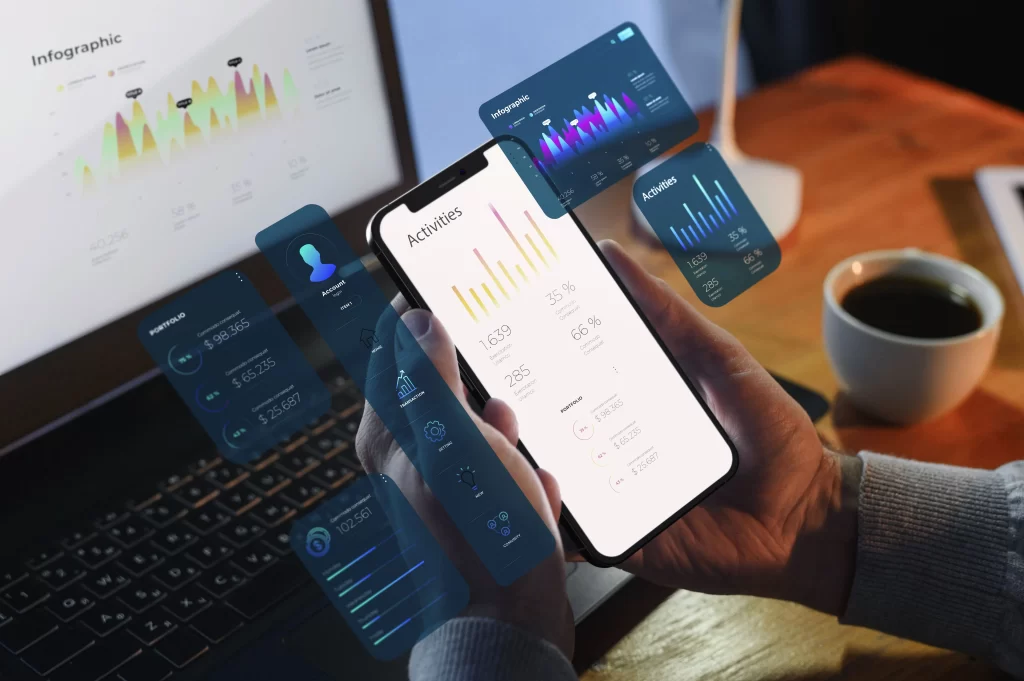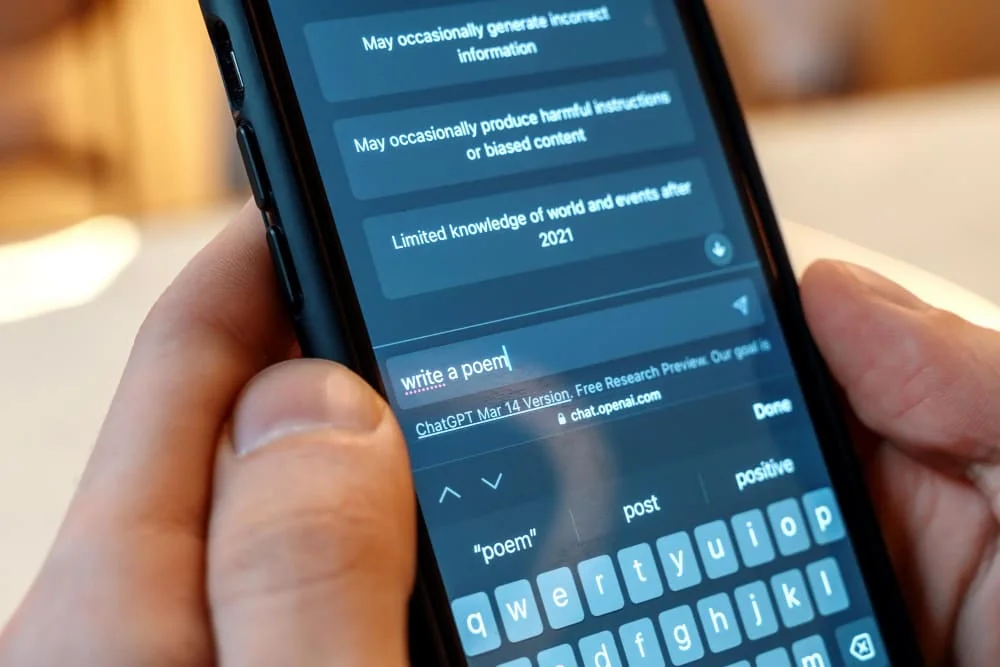In recent years, financial technology (FinTech) apps have revolutionized the way people manage their finances, invest, and conduct transactions. With the rise of mobile banking, peer-to-peer payments, wealth management, and cryptocurrency platforms, the demand for FinTech apps is surging. For businesses looking to enter this thriving market, understanding the costs and key features of FinTech app development is essential.
In this complete guide, we’ll cover everything you need to know about FinTech app development costs, essential features, tech stacks, and how Cenozic can help bring your FinTech app idea to life. FinTech apps development streamline financial services, making them accessible, secure, and user-friendly. From digital wallets and online payment gateways to budgeting tools and lending platforms, FinTech solutions cater to both individual users and businesses. However, developing a FinTech app is a complex process due to regulatory requirements, security concerns, and the integration of multiple financial systems.
To succeed in this competitive space, your app needs to offer a seamless user experience, high-level security, and features that set it apart from the competition. But before diving into development, understanding the costs and features is crucial for proper planning.
Key Features of FinTech App Development
FinTech apps have transformed the way users interact with financial services. From personal finance management to digital payments, these apps offer a wide range of features that make financial transactions faster, more secure, and more convenient. As a leading fintech development company, we specialize in mobile app development services tailored for the FinTech industry. We create secure, intuitive, and high-performance apps that meet the specific needs of modern financial services, including mobile banking, digital wallets, personal finance management, and peer-to-peer payment systems. Below are some key features of FinTech apps that are essential for delivering a seamless and secure experience.
1. Seamless User Onboarding
User onboarding is the first interaction a user has with your app, and it plays a crucial role in forming their first impression. A well-designed onboarding process should be intuitive, quick, and secure, ensuring that users can easily set up their accounts and start using the app.
- Description: Onboarding typically involves gathering user information such as name, email, phone number, and linking their bank accounts or other financial data. Streamlining this process with step-by-step guides, real-time feedback, and in-app prompts can make onboarding smoother. Integration of KYC (Know Your Customer) processes for identity verification is a must, especially in financial apps to ensure compliance with regulatory requirements.
- Benefits: By reducing the time it takes to register and authenticate users, you improve user retention and minimize abandonment rates. Furthermore, implementing secure onboarding processes builds trust from the outset, ensuring that users feel confident in sharing their personal and financial data.
A seamless onboarding process enhances the overall user experience and sets the stage for ongoing engagement.
2. Secure Authentication
Security is the cornerstone of any FinTech app, and robust authentication mechanisms are critical for protecting users’ sensitive information. FinTech apps handle personal and financial data, which makes them prime targets for cyberattacks.
- Description: Secure authentication involves multi-factor authentication (MFA) methods, such as combining something the user knows (password), something they have (a phone for OTP), and something they are (biometric data). FinTech apps often incorporate biometric authentication like fingerprint scanning, facial recognition, or iris scanning to add an extra layer of security. Additionally, OAuth integration enables users to securely log in via third-party services like Google or Facebook, reducing the need for creating new credentials.
- Benefits: By implementing strong authentication protocols, you protect users from unauthorized access, fraudulent activities, and identity theft. It also helps build user trust, as they can feel secure while conducting financial transactions through your app.
Investing in secure authentication features reduces security risks and enhances the overall credibility of your FinTech app.
3. Payments and Transfers
One of the most essential features of a FinTech app is the ability to process payments and money transfers. Users expect real-time payment processing, low transaction fees, and a variety of payment options, including bank transfers, credit cards, and digital wallets.
- Description: Payments can be made seamless with integration of APIs like Plaid for bank account linking or Stripe, PayPal, or Braintree for processing credit card payments. Real-time money transfers, peer-to-peer (P2P) payments, bill payments, and international transfers should be facilitated to meet user needs. Moreover, integrating blockchain technology can further streamline international transfers by reducing transaction time and fees.
- Benefits: Offering multiple payment methods and real-time processing boosts user satisfaction and expands the app’s usability. Moreover, minimizing transaction fees through efficient payment gateways can make your app more attractive to cost-conscious users.
By providing fast, reliable, and low-cost payment solutions, you enhance the overall utility and appeal of your FinTech app.
4. Personal Finance Management
Personal finance management features empower users to manage their finances effectively by providing insights into their spending patterns, savings, investments, and debts. Many FinTech apps use AI and data analytics to offer personalized recommendations and financial advice.
- Description: Personal finance features typically include expense tracking, budget planning, and financial goal setting. Users can categorize expenses, track their spending habits over time, and receive real-time notifications when they’re about to exceed their budgets. Some apps also offer investment tracking, allowing users to monitor their stock portfolios, mutual funds, or cryptocurrency holdings. Integration with AI-driven tools can offer users personalized advice on savings and investment opportunities.
- Benefits: By helping users manage their money more efficiently, FinTech apps can build long-term user loyalty. Personalized recommendations can also enhance user engagement and retention by making the app indispensable for their financial well-being.
Offering comprehensive personal finance tools makes your app not just a transactional tool but a valuable financial advisor for your users.
5. Investment and Trading Features
Investment and trading features allow users to invest in stocks, bonds, mutual funds, cryptocurrencies, and other financial instruments directly from the app. The rise of Robo-advisors and AI-driven investment tools has made investment management more accessible for a wider audience.
- Description: Users can easily monitor their investments in real-time, execute trades, and manage their portfolios with intuitive dashboards and data visualization tools. The integration of Robo-advisors can provide users with automated investment advice based on their financial goals and risk tolerance. Additionally, features like real-time market data, stock alerts, and investment recommendations can be included to keep users informed of the latest market trends.
- Benefits: Offering investment and trading capabilities within your FinTech app provides a one-stop solution for users’ financial needs, boosting user retention and engagement. By allowing users to manage all their financial activities in one place, you increase the app’s stickiness and create opportunities for additional revenue streams like commissions on trades.
By integrating AI-powered investment tools, your app can serve as a comprehensive financial hub for users, expanding its value proposition.
6. Cryptocurrency Support
As cryptocurrencies like Bitcoin, Ethereum, and others gain popularity, many FinTech apps are integrating crypto trading and wallet features. Offering users the ability to buy, sell, and store cryptocurrencies can differentiate your app in the competitive FinTech landscape.
- Description: A FinTech app with cryptocurrency support should provide users with a secure digital wallet to store their assets, along with real-time tracking of cryptocurrency prices. Integration with blockchain technology ensures secure, transparent transactions and eliminates the need for intermediaries. Additionally, some apps provide decentralized finance (DeFi) tools that allow users to lend or borrow crypto assets.
- Benefits: Including cryptocurrency support appeals to a tech-savvy user base interested in diversifying their financial portfolio. By offering a secure and convenient way to manage both traditional and digital assets, your app can stand out in the crowded FinTech market.
Adding cryptocurrency support enhances the app’s appeal to users looking to engage with decentralized financial systems and emerging digital assets.
7. AI-Powered Chatbots and Virtual Assistants
The Role of AI, Blockchain, AI-powered chatbots, virtual assistants are becoming an essential feature in FinTech apps, offering users quick answers to their queries, personalized financial advice, and round-the-clock customer support.

- Description: AI chatbots can assist users with various tasks, such as checking their account balance, making payments, or providing information about recent transactions. More advanced bots can analyze spending patterns and offer personalized budgeting advice or investment recommendations. For more complex issues, chatbots can seamlessly hand off conversations to human agents, ensuring a smooth customer service experience. The total cost of chatbot development depends on the type of bot you choose, its complexity, the required features, and ongoing support.
- Benefits: By providing instant, 24/7 assistance, AI chatbots improve the overall user experience and reduce operational costs associated with customer support. These bots can handle a wide range of user inquiries, making your app more user-friendly and accessible.
AI chatbots increase efficiency while maintaining a high level of customer satisfaction, especially for users who prefer self-service options.
8. Data Analytics and Reporting
Data analytics and reporting features are invaluable for both users and app administrators. Users can leverage these tools to gain insights into their financial behaviors, while app administrators can use analytics to optimize app performance and user engagement.
- Description: FinTech apps often include personalized dashboards where users can view detailed reports on their financial activity, such as monthly spending, savings, or investment performance. These reports are generated using data analytics tools, which can also offer predictive insights to help users make informed financial decisions. Administrators can use analytics to track user engagement, identify areas for improvement, and monitor the app’s performance in real-time.
- Benefits: Data analytics empower users with actionable insights into their financial health. For administrators, data-driven decision-making leads to a more efficient, responsive, and optimized app, ensuring continuous improvement and innovation.
Integrating advanced data analytics features enhances both user satisfaction and app performance, offering valuable insights for future development and marketing strategies.
9. Integration with Banking Systems
To offer a complete financial solution, FinTech apps must integrate seamlessly with users’ existing bank accounts and financial institutions. This allows users to view their balances, transfer funds, and track transactions across multiple accounts from a single app interface.
- Description: Integration with banking systems can be facilitated through APIs like Plaid, which allows users to securely link their bank accounts with the app. The app should also support open banking, which enables the secure sharing of financial data between banks and third-party providers, in accordance with regulations like PSD2 in the EU.
- Benefits: By integrating with users’ bank accounts, your app becomes a comprehensive financial tool that offers full visibility and control over their finances. This integration simplifies users’ financial lives and provides additional value by centralizing multiple financial services in one place.
Seamless banking integration enhances the app’s functionality and convenience, making it an indispensable tool for users looking to manage their finances holistically.
FinTech App Development Costs
When developing a FinTech app, several factors influence the total cost. These include the app’s design, core functionality, security protocols, third-party integrations, and post-launch maintenance. FinTech app development costs vary based on factors like app complexity, features, security, and platform choice. On average, developing a basic FinTech app can range from $50,000 to $150,000, while more complex solutions may exceed $300,000. Essential features such as user authentication, secure payment gateways, and compliance with financial regulations add to the cost.
Custom integrations like blockchain, AI, and real-time analytics further influence pricing. A well-planned budget ensures robust app performance, scalability, and security, essential for creating innovative financial solutions that cater to user needs and industry standards. Let’s dive into a detailed breakdown of these cost components:
1. Design and User Interface (UI/UX)
The design phase of FinTech app development is crucial as it determines the user experience and overall appeal of the app. An effective UI/UX design ensures users can easily navigate the app, access their financial information, and complete transactions seamlessly. To achieve this, designers focus on creating intuitive layouts, employing effective visual hierarchy, and ensuring responsive design across devices (mobile, tablet, desktop). As a leading web development company our UI/UX development services are designed to provide your business with custom, innovative, and user-focused services that drive engagement, satisfaction, and growth.
- Cost range: For a basic app with a simple user interface, the cost might range between $5,000 and $8,000. However, for more complex apps with custom animations, high interactivity, or AI-driven designs, costs can rise to $15,000 or more.
- Why it matters: A clean and engaging design can significantly impact user retention and satisfaction. It can also reduce customer support needs by making features easier to find and use.
Investing in high-quality design isn’t just about aesthetics; it ensures a positive first impression and contributes to the app’s long-term success.
2. Development
The development phase is the backbone of FinTech app creation. It includes building both the frontend and backend infrastructure of the app. Backend development involves creating the logic that powers transactions, stores data securely, and manages user interactions. Frontend development focuses on creating the user-facing aspects of the app—the screens, buttons, forms, and visual elements users interact with.
- Cost range: A simple MVP app development (minimum viable product) with basic functionalities could cost between $30,000 and $50,000. For apps with more advanced features like AI-driven investment tools, multi-currency support, or cryptocurrency integrations, development costs can range between $100,000 and $250,000.
- Factors influencing cost: Complexity of features (like payment gateways, budgeting tools, stock market integrations), real-time data processing, and the need for sophisticated security mechanisms all contribute to higher development costs.
- Timeline: Development can take 3 to 12 months, depending on the app’s complexity and the size of the development team.
Your app’s development cost will depend largely on the scope of your project and the region where your development team is based (more on that below). Investing in skilled developers is essential to ensure that your app is built on reliable, scalable technology.
3. Security and Compliance
Security is non-negotiable in FinTech app development. Financial apps deal with sensitive personal and financial data, which makes them a prime target for hackers. In addition, they must comply with financial regulations to avoid legal issues and ensure trustworthiness. Implementing strong security protocols not only safeguards user data but also builds confidence in the app.
- Cost range: Implementing essential security features such as encryption, two-factor authentication, and secure APIs can cost anywhere between $10,000 and $30,000. If your app deals with sensitive data like credit card information, adhering to regulations like PCI DSS (Payment Card Industry Data Security Standard) will increase the cost.
- Security features: Secure Socket Layer (SSL) encryption, end-to-end data encryption, secure coding practices, data masking, and penetration testing are some of the critical features that add to the cost. Real-time fraud detection systems may also be implemented to minimize risks, adding further to the expenses.
- Compliance: In addition to PCI DSS, you may need to ensure compliance with regulations like GDPR for data privacy and KYC/AML (Know Your Customer/Anti-Money Laundering) regulations, depending on your region.
Investing in security features is essential for protecting both users and the business from costly breaches and regulatory fines. It’s also crucial for maintaining the app’s credibility in a heavily regulated industry.

4. Third-party Integrations
FinTech apps often require integrations with third-party services to provide comprehensive financial solutions. This could involve linking with payment gateways, integrating with banking APIs, or incorporating financial data providers for services like stock trading or cryptocurrency platforms. Smooth integration of these services ensures users can make payments, transfer money, or access financial data without friction.
- Cost range: Depending on the number and complexity of third-party APIs, integration costs can range between $5,000 and $15,000. If you’re integrating advanced services such as multi-currency support, real-time market data, or cryptocurrency wallets, the costs can increase significantly.
- Popular APIs: Payment gateways like Stripe, PayPal, and Braintree; financial APIs like Plaid or Yodlee for account linking; and data providers like Alpha Vantage for stock data or Coinbase for cryptocurrency functionality are commonly used in FinTech apps.
- Challenges: While third-party APIs save development time, ensuring smooth integration requires expertise. Proper API management, testing, and security considerations need to be factored into the development process.
Third-party integrations are critical for expanding the functionality of your app without reinventing the wheel. However, each integration adds to development complexity and cost.
5. Maintenance and Updates
Once your app is live, ongoing maintenance is critical to keep it functional, secure, and up-to-date. The financial services industry is highly dynamic, with new regulations, security threats, and user expectations constantly evolving. Your app will require regular updates to address security vulnerabilities, bug fixes, and performance improvements.
- Cost range: Maintenance costs typically range from 15% to 20% of the total development cost annually. For example, if your app cost $100,000 to develop, expect to spend around $15,000 to $20,000 per year on maintenance.
- Maintenance tasks: This includes regular monitoring of system performance, patching security vulnerabilities, updating third-party APIs, improving app performance based on user feedback, and complying with new regulations.
- Long-term value: While maintenance costs are ongoing, they are essential to prevent costly breakdowns or security breaches. Regular updates ensure that your app remains competitive and functional in the fast-changing FinTech space.
Skimping on maintenance can lead to larger problems down the line, such as outdated features, security risks, or performance issues that frustrate users and drive them to competitors.
6. Development by Region
The location of your development team significantly impacts costs. FinTech app development rates vary widely based on the region, and choosing a development team in lower-cost regions can offer substantial savings without compromising on quality.
- USA/Canada: $100 – $200 per hour for experienced developers. The high cost reflects the extensive expertise and advanced tech infrastructure in this region.
- Western Europe: $80 – $150 per hour. Countries like the UK, Germany, and France offer high-quality development services, though they come with premium pricing.
- Eastern Europe: $40 – $80 per hour. Countries such as Ukraine, Poland, and Romania offer highly skilled developers at a fraction of the cost compared to the US or Western Europe.
- India: $25 – $50 per hour. India is a popular destination for outsourcing development due to its large talent pool of skilled developers at a low cost. Cenozic, for example, offers competitive FinTech app development services from India, allowing businesses to save significantly without sacrificing quality.
Choosing the right region for your development team depends on your budget, timeline, and need for proximity to your business operations. Outsourcing to regions like Eastern Europe or India offers significant cost savings while maintaining high quality.
How Cenozic Can Help in Fintech App Development
Cenozic can play a pivotal role in transforming your FinTech app development journey by offering end-to-end solutions that cater to the unique challenges of the financial industry. Cenozic offers cutting-edge fintech software development services, specializing in secure solutions, seamless integration, advanced analytics, user-centric design, and mobile accessibility. Our tailored technology empowers financial institutions with secure operations, streamlined processes, actionable insights, and superior user experiences, driving efficiency and innovation in the financial industry. Here’s how we can help:
- Expertise in FinTech Solutions: We have extensive experience in developing innovative, secure, and scalable FinTech apps that align with industry standards. Our team is proficient in building solutions like mobile banking, digital payments, peer-to-peer lending platforms, and personal finance management apps.
- Security & Compliance: Our development approach emphasizes robust security measures, including encryption, secure payment gateways, and compliance with financial regulations like PCI DSS and GDPR. We ensure your app maintains the highest level of security to protect sensitive financial data.
- Custom Development: We understand that every financial service provider has different needs. Our team specializes in creating tailored FinTech apps with features like real-time analytics, multi-currency support, AI-powered fraud detection, and blockchain integration, ensuring your app stands out in the competitive FinTech landscape.
- Seamless User Experience: At Cenozic, we prioritize user experience, designing intuitive interfaces that enhance user engagement. We ensure your app offers seamless navigation, easy onboarding, and a smooth transaction process, crucial for customer retention.
- Cutting-Edge Technologies: Our developers leverage the latest technologies, including blockchain, AI, and cloud computing, to create innovative FinTech solutions. We ensure your app is future-ready and can adapt to evolving trends in the financial sector.
- Post-Launch Support: We provide comprehensive post-launch support and maintenance, ensuring your app remains updated with the latest security protocols, performance enhancements, and feature upgrades.
By partnering with Cenozic, you’ll have access to a dedicated team that understands the complexities of FinTech app development, delivering top-notch solutions that drive success in the digital finance industry.
Frequently Asked Questions(FAQ)
Whether you’re curious about essential functionalities, development expenses, or the benefits of choosing Cenozic, this section provides clear, concise answers to help you make informed decisions. Discover insights on how we ensure regulatory compliance, integrate advanced technologies like AI and blockchain, and deliver tailored solutions to meet your unique financial service needs. Explore the FAQs for a comprehensive understanding of FinTech app development with Cenozic.
What is a FinTech app, and why is it important?
A FinTech app is a digital platform that offers various financial services, such as online banking, investment management, mobile payments, or insurance services. These apps have revolutionized how consumers and businesses manage finances by enabling secure, convenient, and fast access to financial tools. FinTech apps are particularly valuable because they bridge the gap between traditional financial services and modern technology, making banking and transactions more accessible and efficient. With the global rise in digital adoption, FinTech apps cater to the growing demand for on-the-go financial solutions, offering personalized experiences and insights. They are essential for businesses looking to enhance customer satisfaction and remain competitive in a tech-driven world.
How much does it cost to develop a FinTech app?
The cost of FinTech app development depends on various factors, including app complexity, features, platform choice (iOS, Android, or both), and the development team’s location. A basic app with minimal features can cost around $50,000, while a feature-rich, complex app may cost upwards of $300,000. Costs also increase with advanced functionalities like real-time analytics, AI-driven recommendations, or blockchain integration. Collaborating with an experienced development team, such as Cenozic, ensures you get a high-quality app within your budget. Transparent communication and clear project planning are crucial to managing costs effectively.
What are the essential features of a FinTech app?
FinTech apps typically include secure authentication (biometric login or two-factor authentication), intuitive user interfaces, real-time transaction processing, account management dashboards, and advanced analytics. Other essential features include integration with third-party financial services, push notifications for updates and alerts, and robust security protocols like end-to-end encryption. Personalization features, such as AI-driven insights or tailored financial advice, also play a critical role in enhancing user experience. Including these features not only boosts user engagement but also ensures compliance with industry standards and security regulations.
What factors influence FinTech app development costs?
Several factors affect the cost of developing a FinTech app. The app’s complexity—whether it’s a simple mobile wallet or a complex trading platform—plays a significant role. Development platforms (iOS, Android, or both) also impact costs, as cross-platform development may require additional resources. The number of features and their sophistication, such as Data analytics, AI, or blockchain integration in fintech applications, contribute to costs. Security features, including encryption and regulatory compliance, are crucial for safeguarding sensitive financial data but add to development expenses. Finally, post-launch support, updates, and maintenance influence the overall cost.
How long does it take to develop a FinTech app with Cenozic?
The development timeline for a FinTech app depends on the project scope and complexity. A basic app with standard features may take around 4-6 months to develop, while a more advanced app with complex functionalities could take 9-12 months or longer. The timeline also depends on factors like the development team’s expertise, the technology stack used, and the responsiveness of the client during the development process. Working with a professional company like Cenozic ensures efficient project management and timely delivery without compromising quality.
How can Cenozic help with FinTech app development?
Cenozic is a trusted partner for FinTech app development, offering expertise in creating secure, feature-rich, and scalable apps. We work closely with clients to understand their unique needs and deliver solutions that enhance user experience and operational efficiency. Our team specializes in integrating advanced technologies like AI, blockchain, and real-time analytics to create innovative financial apps. With a focus on regulatory compliance and robust security, Cenozic ensures your app meets industry standards while addressing customer pain points. Partner with us to revolutionize your financial services with cutting-edge technology.


 The Future of AI: How Machine Learning is Transforming Businesses
The Future of AI: How Machine Learning is Transforming Businesses  AI in E-commerce: Enhancing Customer Experience & Engagement
AI in E-commerce: Enhancing Customer Experience & Engagement  How AI-Powered Chatbots Are Revolutionizing Customer Support
How AI-Powered Chatbots Are Revolutionizing Customer Support  The Role of AI in Mobile App Development: Smarter and Faster Apps
The Role of AI in Mobile App Development: Smarter and Faster Apps  How To Choose Top Website Development Company In USA
How To Choose Top Website Development Company In USA 
